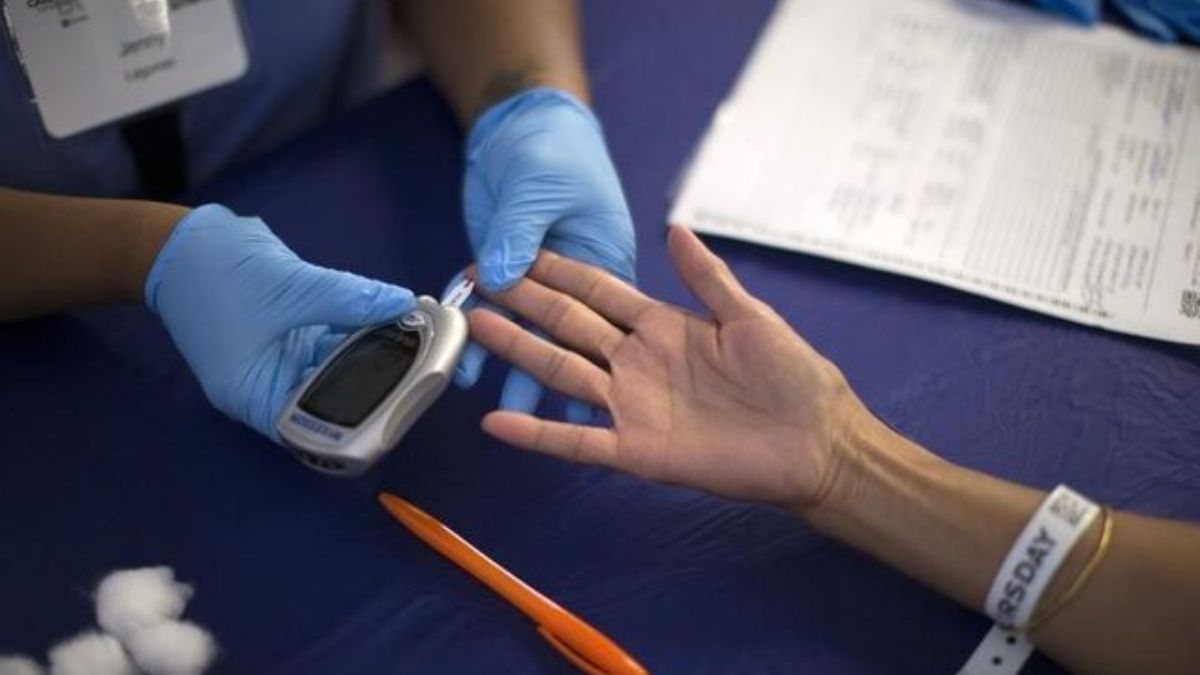India has one-fourth of the world’s diabetes patients, according to a study published on the eve of the World Diabetes Day (November 14).
India currently has 26 per cent of the world’s diabetes patients at 212 million (21.2 crore), according to the study by NCD Risk Factor Collaboration, an international collective of health scientists.
The study, which was published in Lancet, analysed diabetes prevalence across the world during 1990-2022 and found that India also had the most diabetic patients not undertaking any treatment. At 113 million (11.3 crore), the study found that India had 30 per cent of world’s patients with untreated diabetes — 50 per cent more than the next country (China).
Even as deaths from top four non-communicable diseases has consistently fallen in recent decades, the cases as well as deaths from diabetes have risen. It does not need to be so as a large number of diabetes cases are rooted in poor lifestyle and can be managed better — and even prevented.
While disease prevalence is higher among older adults, type 2 diabetes is fast emerging as the disease of the young. Last year, the International Diabetes Federation (IDF) in its report revealed that young adults under 25 in India comprised 12 per cent of type 2 patients, which was below 4 per cent a decade ago.
While a cocktail of lifestyle changes driven by a rapidly-changing world pushed India into such a diabetic crisis, it can be managed with a bunch of lifestyle adjustments and medical interventions that are readily available in India are becoming more accessible by the day.
What’s driving diabetes in India?
Just one generation back, the prevalence of diabetes was 1-2 per cent in 1970s.
Then, diabetes cases began to rise since 1990s, coinciding with rapidly growing economy after the liberalisation in 1991 and sedentary lifestyle. This combination is behind the surge of type 2 diabetes in India.
While type 1 diabetes that requires regular administration of insulin is believed to be largely genetic and cannot be prevented as such, as the exact cause is not known, type 2 diabetes is preventable and is affected by one’s lifestyle.
Two primary reasons behind the surge of type 2 diabetes are shifts in dietary habits and reduced physical activity, says Dr Amrita Ghosh, a diabetes specialist at Fortis CDOC Hospital, Delhi.
The issue is much more pronounced among the youth — as flagged by the IDF report mentioned above.
Ghosh tells Firstpost that obesity is the major driver of diabetes and young Indians are vulnerable to it.
“The availability and popularity of processed, high-sugar foods among Indian youth have led to increased cases of obesity, a major precursor to type 2 diabetes. Fast food and sugary beverages have become daily staples for many, setting young people on a path toward early-onset diabetes,” says Ghosh.
What worsens the situation is the sedentary lifestyle that getting more sedentary by the day, says Ghosh.
“Sedentary lifestyle has accompanied rapid urbanisation in India. Reduced physical activity alongside extensive screen time means that fewer young people engage in the exercise necessary for healthy metabolic function, which significantly raises the risk of diabetes,” says Ghosh.
Double whammy for Indian youth
While sedentary lifestyle and hectic professional lives in disconnected urban settings drive obesity that leads to diabetes, the mental health crisis among the young people from such a lifestyle also adds to the problem.
Ghosh tells Firstpost that the high stress that young people face pushes them into a “vicious cycle” that puts them at higher risk.
“The high level of stress that many young Indians face either from professional or personal situations disrupts hormone balance and raises blood glucose levels, a factor that often goes unrecognised. Chronic stress can lead to poor sleep and unhealthy habits like overeating, creating a vicious cycle that drives the risk of developing diabetes,” says Ghosh.
Diabetes is manageable & preventable — here’s how
In major urban centres, up to 35 per cent Indian adults are in pre-diabetes stage, according to a study by Department of Science and Technology of Government of India. Being pre-diabetic means that a person’s blood-sugar level is high and is on its way to become type-2 diabetes, but it is not nearly there.
While this highlights the risk that so many people are on their way to be diabetic, it also shows the opportunity to prevent these many cases as type-2 diabetes is preventable with lifestyle adjustments.
Ghosh says that interventions need to be there from an early stage.
Ghosh says, “Schools and colleges are encouraged to integrate physical fitness programmes, nutrition education, and healthy canteen while public health campaigns need to emphasise the importance of awareness and early screening,” says Ghosh.
Ghosh adds that while rising diabetes is a troubling trend, particularly among the young, it can be prevented with lifestyle adjustments at personal- and family-level and a concerted public health effort.
The Lancet study mentioned above says that simple interventions like replacing sugary, processed, carbohydrate-heavy food with yogurt or other dairy products,
whole grains, and green leafy vegetables reduce the risk of diabetes.
The study further says, “Curbing and reversing the rise in obesity, and improving the quality of diet, require both regulations and taxes to reduce the intake of foods such as refined carbohydrates that lead to weight gain, and improving financial and physical access to healthier foods, such as fresh fruits, vegetables, legumes, dairy and fish, and to sports and active leisure.”
The World Health Organization (WHO) says that 150 minutes of exercise a week may keep you healthy enough to keep type-2 diabetes away. This may include something as simple as walking 30 minutes a day.
Bariatric surgery a good tool — but not a magic bullet
In recent years, bariatric surgery has emerged as a surgical intervention to manage diabetes and obesity. It is commonly called weight loss surgery.
The bariatric surgeries involve altering the digestive system to limit food intake or nutrient absorption, which not just helps in weight loss but also improves metabolic health, making such surgeries a viable option for people with type 2 diabetes, says Dr Mohit Bhandari, the Chief Bariatric Surgeon at Pristyn Care and Director of Mohak Bariatrics & Robotics.
Bariatric surgeries have been linked to reduced insulin resistance and enhanced insulin sensitivity, which improves the body’s ability to regulate blood sugar.
However, while bariatric surgeries have their benefits, they are not for everyone.
Bhandari says that lifestyle changes and medical management should always be tried first before considering surgeries.
Bhandari says, “Candidates for bariatric surgeries typically include those with a body mass index (BMI) of 35 or higher, especially if they have obesity-related health conditions like diabetes. Diabetic patients considering this surgery should consult with doctor to understand the risks and benefits.”
Bhandari emphasises that the surgery is not a magic bullet.
“Bariatric surgery is a tool and not a cure. Even with the surgery, diabetes requires a lifelong commitment to healthy diet, regular exercise, and medical follow-ups,” says Bhandari.

)




